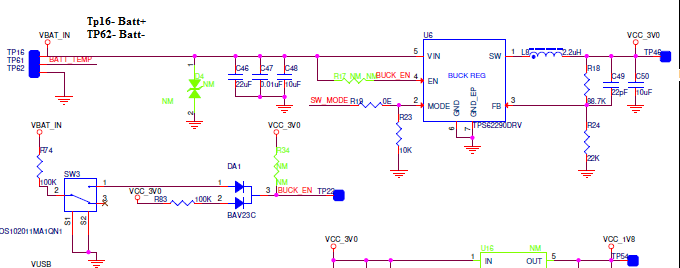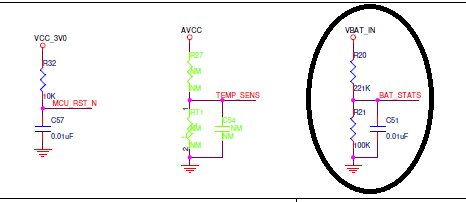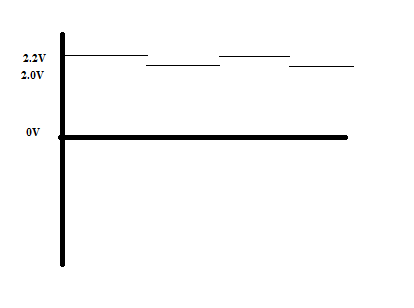Other Parts Discussed in Thread: TPS62740
Hi,
In our application, we need a switch which can ON our device but not able to OFF via switch if someone closed the switch(SW3). But before shipping the product we need our micro-controller should be off so that it can consume less power. Thats why we closed the switch SW3 and unplug the battery and connect the battery again. but when we plug the battery again we are able to get 3V on output via oring circuit on BUCK_EN.
Can i know the reason behind this? Without enabling buck_EN how BUCK got enable?
I did some more debugging which is as follow-
1. Remove the R83 and closed the switch SW3.
2. Plug the battery and Switch on the device.
3. Now we closed the switch and unplug the battery
4. After plugging the battery we are able to get 2.2V on Buck output. which should not 2.2V since in our application output volatge work as feedback for buck enable pin. thats 2.2V enable the buck.
My question is why unplugging and plugging the battery create 2.2V on output of buck while switch is in OFF state? Please provide me possible reason.
Battery positive terminal on TP16
Battery thermistor terminal on TP61
Battery negative terminal on TP62




